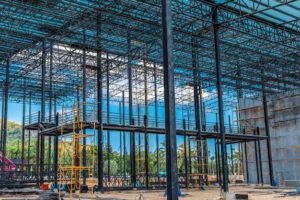
Introduction:
Steel structure fabrications have revolutionized the construction industry, offering a versatile and reliable solution for a wide range of projects. From soaring skyscrapers to intricate bridges, steel structures have become synonymous with strength, efficiency, and sustainability. In this blog post, we will explore the key benefits and applications of steel structure fabrications, shedding light on why this construction method continues to dominate the industry.
- Strength and Durability: Steel is renowned for its exceptional strength, making it an ideal material for structural applications. Steel structures can withstand heavy loads, resist seismic forces, and endure extreme weather conditions. The inherent strength of steel provides engineers with the freedom to design structures that have large spans, minimal support columns, and innovative architectural features. Whether it’s a high-rise building or a long-span bridge, steel ensures the structural integrity and longevity of the project.
- Efficiency in Construction: One of the notable advantages of steel structure fabrications is the efficiency it brings to the construction process. Steel components are prefabricated off-site, ensuring precision and reducing construction time. Unlike traditional construction methods, steel structures can be rapi
- dly erected, accelerating project timelines and reducing labor costs. The use of computer-aided design (CAD) and computer-aided manufacturing (CAM) technologies further enhances efficiency by streamlining the fabrication process and optimizing material usage.
- Versatility in Design: Steel structure fabrications offer unparalleled flexibility and adaptability in design. Steel can be easily manipulated into various shapes and sizes, allowing architects and engineers to create innovative and visually striking structures. The material’s malleability enables the construction of complex geometries and curved elements, providing designers with endless possibilities for architectural expression. This versatility in design has contributed to the rise of iconic steel structures that have become landmarks worldwide.
- Sustainability and Environmental Benefits: In an era where environmental consciousness is paramount, steel structure fabrications shine as a sustainable construction solution. Steel is a highly recyclable material, with a significant portion of new steel production derived from recycled sources. Furthermore, steel structures are energy-efficient, as they can incorporate insulation materials to reduce heat transfer and minimize energy consumption. Steel’s durability and long lifespan also contribute to sustainability by reducing the need for frequent renovations and replacements.
- Diverse Applications: Steel structure fabrications find applications in various sectors, ranging from commercial and residential buildings to industrial facilities and infrastructure projects. From warehouses, sports arenas, and shopping malls to airports, bridges, and offshore platforms, steel structures offer the strength, adaptability, and cost-effectiveness required for diverse project requirements. Steel’s inherent properties make it an optimal choice for projects that demand high load-bearing capacity, clear spans, and resistance to environmental factors.
Conclusion:
Steel structure fabrications have become the backbone of modern construction, offering strength, efficiency, and sustainability. With their ability to withstand extreme forces, facilitate efficient construction processes, and provide flexibility in design, steel structures continue to shape skylines and redefine architectural boundaries. As the construction industry embraces sustainability and innovation, steel structure fabrications will undoubtedly play a central role in shaping the built environment of the future.
